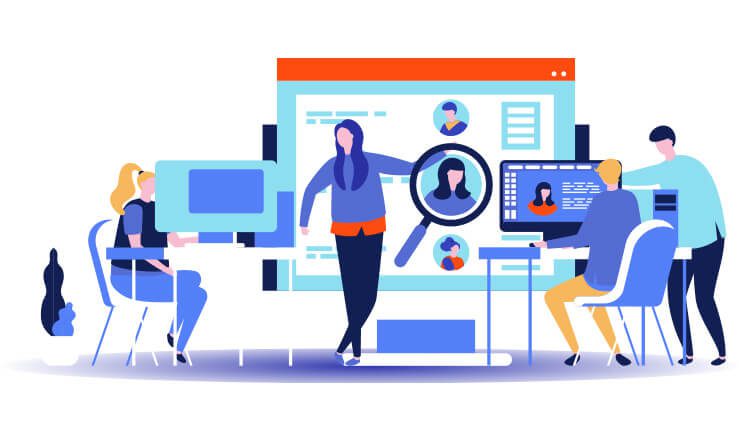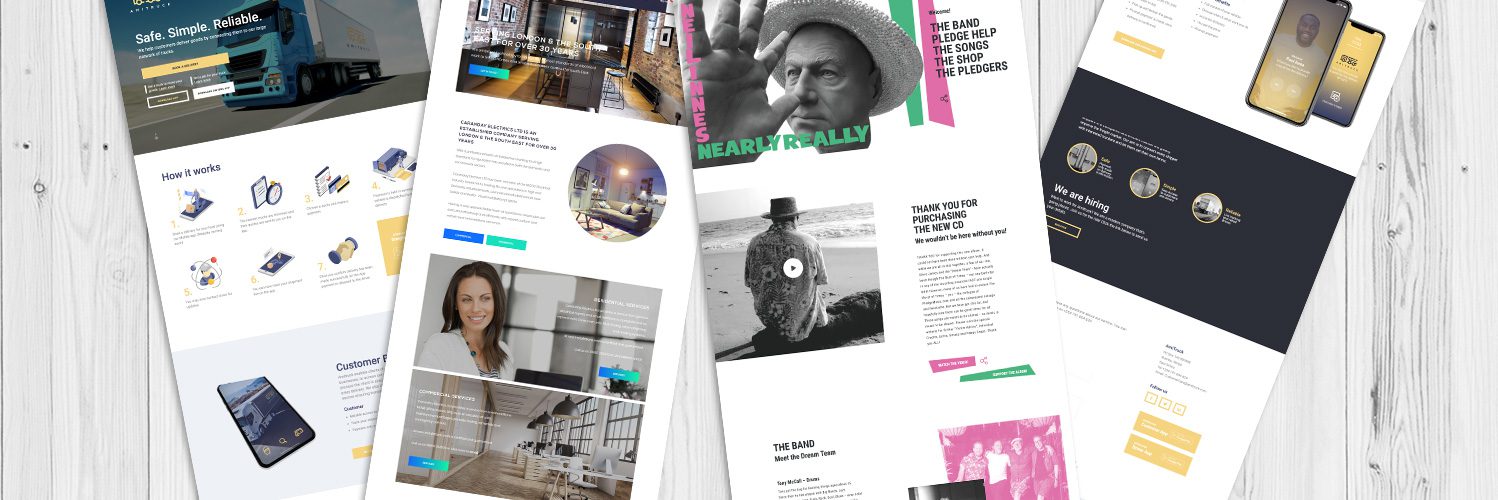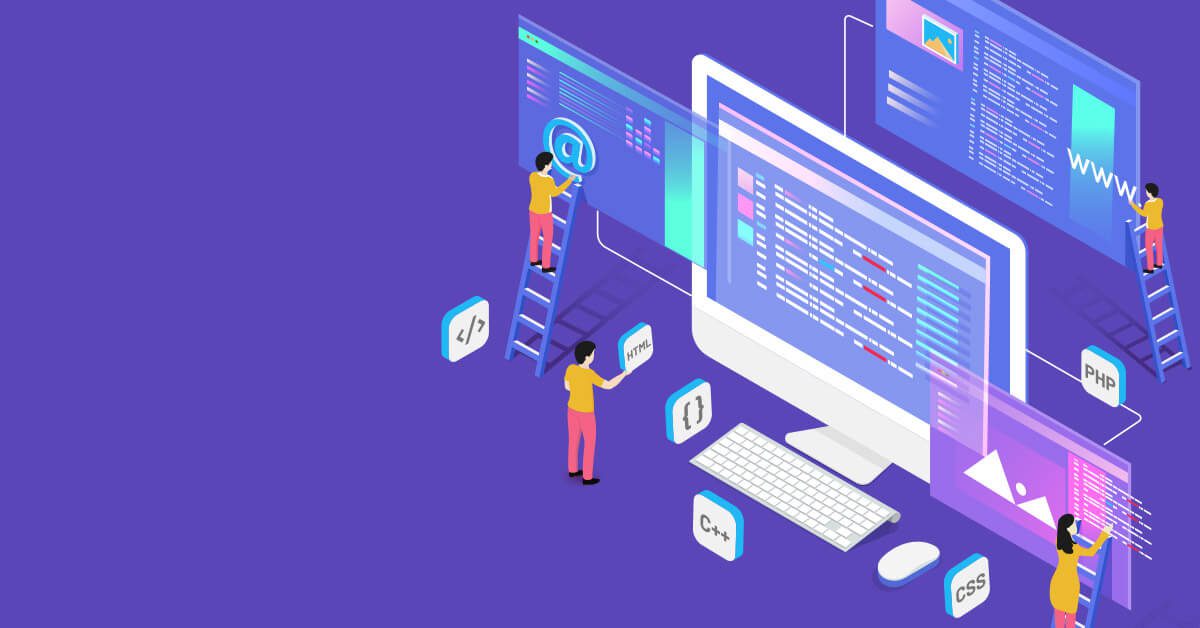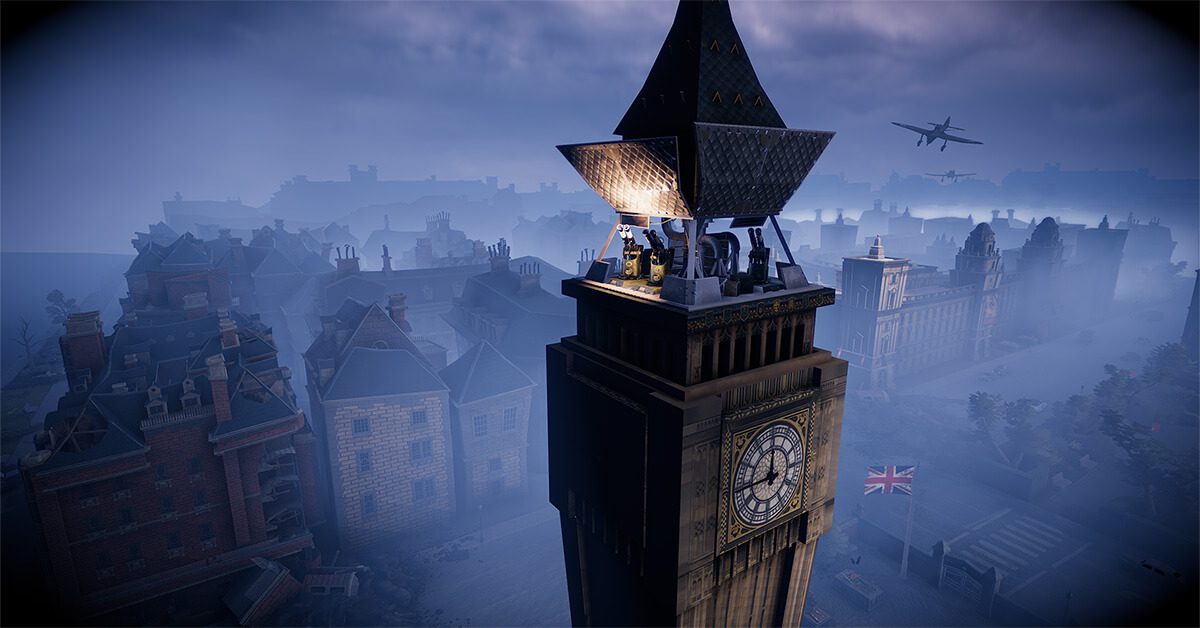
Article
How Much Does a One-page Website Design Cost in 2024?
PUBLISHED:April 13, 2022
UPDATED:April 2, 2024
Are you considering the creation of a one-page website for your business but unsure about its cost implications? At LWDA, we're not just asked about single-page sites; we often advocate for them, especially for new ventures with budget constraints. So, let's delve into the factors that determine the cost of a single-page website and how you can optimise your budget effectively.
We wrote articles back in 2019 and 2020 about the joys of one-page websites and the pros & cons of one-page vs multi-page sites, but with the ongoing popularity of single-page website solutions, we felt that we should address how we cost these projects openly and transparently.
Understanding the Misconceptions
One common misconception is equating the term ‘single-page’ with simplicity and, by extension, affordability. However, this isn’t always accurate. In reality, we’ve produced several single-page websites that were intricately designed and executed, challenging the notion of simplicity and, as a result, incurring relatively high costs.
Factors Influencing Cost
The factors that influence the cost of a one-page website extend far beyond just design and development. It’s too simplistic to think about any website project in just those terms, especially when we take into account the stages of discussion, planning, prototyping and drawing up a detailed technical specification before we even consider starting the design work.
The technical specification is key to the success of any website. This document outlines the full scope of the project, listing all requirements so that both the client and development agency understand what will be delivered at the end of the project. It’s not until this document has been completed and signed off that a final cost be submitted.
As we like to say at London Web Design Agency, the devil is in the details, and it’s not until we have completed a full planning and specification stage that we can commit to costs. But there are a range of factors we can highlight here that should help you gauge if a single-page website will be the cheapest option or if you may need to allocate a little extra budget.
1. Design Complexity
The complexity of design elements plays a pivotal role in determining the cost of a one-page website. When incorporating intricate graphics, animations, and interactive features, the workload for the designer increases exponentially.
Graphics require meticulous attention to detail, especially if they’re custom-made to align with the brand’s identity.
Animations, whether subtle or elaborate, demand expertise and time for seamless integration into the website’s design.
Moreover, interactive features such as contact forms, chatbots, or dynamic content sections necessitate advanced programming skills and thorough testing to ensure functionality across various devices and browsers. (see Website Functionality below)
As the complexity of these design elements escalates, so does the investment required from both a time and resources perspective. Clients should be aware that while these elements enhance user engagement and visual appeal, they come with a corresponding increase in cost due to the expertise and effort required for their implementation. Thus, businesses must prioritise their design needs and budget accordingly to achieve a balance between aesthetic excellence and financial feasibility.
2. Page Length
The length of a single page website directly impacts its cost. Visualising and building longer pages require more time and resources. Therefore, keeping your website concise can significantly reduce costs.
How long is a single-page website?
When quoting for websites, we usually base our costs on the number of pages required. This would include a home page and contact page, plus a selection of others, such as:
- About Us
- Services (Overview)
- Service (Individual)
- Product Category
- Product
- FAQ
- News (Overview)
- News Article (Post)
- Privacy Statements, etc
If we imagine for example that it takes £1,000 to design & build one individual page template (responsively for desktop & mobile devices), then a website that contains five templates would cost £5,000.
Now consider how much would it cost if we took those five templates and stacked them on top of one another to form one long single-page website. How much would it cost then? £1,000 or £5,000? We’re only using simplistic figures here, but you can probably see what we’re getting at.
If you can keep your single-page website short & sweet, you’ll be helping to keep your costs low. Moreover, simple websites deliver a great user experience due to their ease of use, so for this reason alone, a single-page website is often the best choice for small businesses.
Quite simply, the length of a web page will impact the amount of time it takes a website designer to visualise and a professional web developer to build. So, the longer the page, the higher the cost.
3. Website Functionality
Functionality and interactive elements play a crucial role in determining website costs. From basic rollovers to complex animations and eCommerce capabilities, each feature adds to the development time and, consequently, the overall cost.
Common functionality and interactive requirements often include, but are not limited to:
- Carousels and slideshows (often seen at the top of the page)
- Image galleries
- Video integration (background or foreground)
- Social media feeds (Instagram and Twitter (X))
- Contact forms
- Accordions (often used for FAQs)
- Pop-ups (used for alert messages, team profiles, etc)
- Parallax scrolling
- Document downloads
None of these functions are difficult to implement, it’s just a case of understanding the number of functions that you wish to include within your new website.
Each function takes time for our web developers to code and test before launching the website. So, the more functions you require, the longer the site will take to build and the higher the development costs will be. A simple website will be cheaper to build than a complex website.
4. API Integrations
Integration with third-party systems, facilitated by APIs (Application Programming Interface), is an additional cost factor. Whether it’s CRM integration for customer data management or eCommerce integration for an online store, each integration varies in complexity, affecting project expenses.
API integrations can be quite straightforward or extremely complex depending on the documentation available. If no documentation exists, then a bespoke API may need to be written, which would be a costly exercise.
Let’s take a look at two of those popular types of integrations…
CRM integration
Many businesses use a CRM (Customer Relationship Management) to manage customer data, including names, email addresses and product preferences. For marketing purposes, integrating a CRM platform into a website is an essential task, enabling the company to expand its database and streamline workflows.
The most basic form of CRM integration is often with a platform such as Mailchimp which would be used to send a company newsletter. But CRM tools are also used for more complex marketing needs, such as harvesting customer contact details in exchange for whitepapers and reports, offered as downloadable content after a form submission. We helped implement this type of solution for Sapience Communications using HubSpot.
We’ve managed simple mailing list integrations for Friends of Friendless Churches and Mini-Engineers, plus much more complex integrations for the likes of Peach Properties (managing property listings). These have taken anything from a few hours to a few days to set up and test.
So, at the very least, if your website includes a contact form or questionnaire that’s being used to collect customer data for marketing purposes, then you’ll need some form of CRM integration.
eCommerce Integrations
The demand for eCommerce websites has increased exponentially since the pandemic, with companies scrambling to make sure their products are available online. Thereby relieving the reliance on a physical bricks-and-mortar store. From warehouse management systems to payment gateways, these integrations streamline online transactions, albeit with varying complexities.
Popular eCommerce website integrations include but are not limited to the following:
- WMS – Warehouse Management System for order fulfilment.
- POS – Point of Sale for stock level control and customer data management (great for loyalty schemes).
- Marketing Automation APIs – Great for automating the segmentation of customers into groups for targeted marketing.
- Customer Reviews – From the likes of Trustpilot and FeeFo.
- Payment Gateways – Including Stripe, PayPal, Apple Pay and more.
Again, some of these integrations can be quite simple and others more challenging. So it’s always important for your web developer to know in advance any specific eCommerce integration requirements. This can be taken into account at an early stage of the project and factored into the costs accordingly.
A good example of a one-page website with eCommerce integration is De Havilland Gin, which we built for a single-product brand back in 2021.
Single-page Website Templates
While off-the-shelf templates offer convenience, bespoke designs cater to unique requirements. Our agency prioritises bespoke solutions for optimal speed, security, and SEO (Search Engine Optimisation). Though pricier, this approach ensures unparalleled quality and support, which should be a top priority for any business looking to launch its products or services online.
LWDA specialises in using the ever-popular WordPress platform to build this type of website. Be it a simple website that sells a single product, or a multi-page website that outlines a full range of services with additional pages for the company mission, team profiles and blog posts, WordPress is our CMS (Content Management System) of choice when it comes to creating a custom-built website.
We only use premium plugins that are well-vetted and supported with regular updates. We often write our own if we feel that the site will benefit in some way, either via increased page load speed or improved security. If we can avoid using them at all, then we’ll just add the required functionality directly into the code of the website, because every third-party WordPress plugin has the potential to slow down the website or introduce a vulnerability.
Building bespoke will always be more expensive than using free templates, but what you are paying for is peace of mind. A web development agency that takes pride in its work, is fully responsible for the code that it writes and offers great after-sales support.
Embracing Simplicity: The MVP Approach
If you are looking to have a basic website created for your company and have a tight budget, then a one-page site could be the ideal solution for you.
A one-page website, often likened to a Minimal Viable Product (MVP), offers a cost-effective solution for brand exposure. By focusing on essential content and streamlined functionality, you can maximize your budget without compromising effectiveness to deliver the ideal small business website.
Content should be minimal and the intention of the site should be sharply focused. Give the user just the right amount of information to make an informed decision and then perform the desired action (make an enquiry, purchase, download a document, etc). Don’t overload your single-page website with too many sections and make sure that each one is lightweight when it comes to text.
Resist the urge to over-complicate the site with too many functions and integrations. Only use what you really need to perform the tasks that are essential to your business. You can always add more functionality when you have extra funds to invest in the project.
A few of our one page website examples include Caranday Electrics, Neil Innes Nearly Really, and Simon Day Comedian. Although we did end up adding a blog to that last one.
Average Price of a One-page Website
Looking at the websites we’ve built over the years, we feel that the average cost of a one-page website ranges from £1,500 to £10,000, depending on the factors outlined above.
At the lower end of the budget, you might just be looking at a nice landing area with a clear positioning statement, attention-grabbing call-to-action, plus a little content about your services, followed by your contact details and enquiry form.
The upper end of the budget would be an informational website with multiple sections, each requiring a unique design approach and extended development period. A good example of a single-page website at the top end of the budget would be Time Raiders.
The cost of a website is based on the time it takes for our team to design & build the website, plus a little extra for planning, research (if there are complex integrations) and testing before going live. If your website is small, with very little functionality and very few integrations, then the cost will be relatively low. If, however, you require multiple design options for review, many content sections, animations & transitions, plus one or two system integrations, then you’ll be looking at a higher price tag.
For those on a very tight budget, we’ve developed our own WordPress template, which can be used for single-page or multi-page websites. We’d put it up there with the best one-page website builders, so if you’re interested in this type of solution, feel free to drop us a line and we’ll discuss your requirements.\
Additional Costs
Factors like domain registration, hosting, and maintenance will incur additional charges, whether they be from third-party suppliers or a web agency such as ourselves.
Ideally, you should register your domain name yourself using a service such as 123-reg or Godaddy. This also allows you to administer your email service. Try to obtain a custom domain name that includes your business name or it’s acronym within the URL. For example, we use londonwebdesignagency.com as our main domain, but we use lwda.co.uk as well.
Not all web hosting packages are the same, with varying levels of support and security features available depending on the monthly costs. We host our websites using servers which are optimised for WordPress, delivering fast page-load times alongside the piece of mind that comes with daily back-ups and a raft of additional features.
Our Service Level Agreements include monthly hosting costs alongside a minimum of one hour to keep WordPress and any associated plugins updated for security purposes. This type of website maintenance is essential to keep your website running smoothly and reliably. If you decide to use an off-the-shelf template solution, it will be your responsibility to update WordPress and plugins during the lifetime of your website. If problems arise, you’ll need to liaise with your hosting company and/or the original template developer to solve these issues.
Lastly, you may also need to allocate some budget for content creation. Most clients supply their photography and text to populate the website, but we have experienced many instances where the client does not have these materials, and so requires assistance in sourcing or creating this content. The extra time required for this task will impact the total cost of the website.
Conclusion
In navigating the cost considerations of single-page websites, it’s crucial to balance factors such as design complexity, the length of the page, functionality and integrations with affordability.
Working on a tight budget means that you should prioritise essential features, embrace simplicity and consider bespoke solutions for long-term value and reliability. Just don’t forget to allocate some extra budget for your domain registration, email, hosting and maintenance.
Ready to embark on your single-page website journey?
Reach out to us and we’ll be happy to discuss your requirements and provide a free quote. We then hope to work with you, crafting a tailored solution that optimises your budget and maximizes your online presence.
One-Page Website Design Cost: FAQs
The typical cost ranges for a one-page website design vary based on several factors such as the complexity of design elements, the level of customisation, and the expertise of the designer. On average, basic one-page website designs may range from £1,500 to £3,500, offering essential functionalities and minimal customisation. Mid-range options, incorporating more intricate designs and interactive features, typically fall between £3,500 to £5,000. For premium one-page websites with highly customised designs, advanced functionalities, and superior user experience, the cost can exceed £5,000 and may go up to £10,000 or more. These estimates serve as general guidelines and actual prices may vary depending on the specific requirements of the project. Clients should thoroughly discuss their needs with potential designers to obtain accurate cost estimates tailored to their unique project scope.
Yes, it’s possible to get a quality one-page website design on a tight budget, especially by leveraging DIY website builders/pre-built website templates or hiring freelance designers with competitive pricing. While budget constraints may limit certain customisations or advanced features, many designers offer affordable packages tailored to small businesses and individuals. By clearly outlining your requirements, prioritising essential elements, and negotiating with designers, you can achieve a professional-looking one-page website that effectively represents your brand without compromising quality.
Yes, there can be hidden costs associated with one-page website design, such as domain registration fees, hosting charges, and ongoing maintenance costs. Additionally, certain features or functionalities may incur extra expenses, especially if they require third-party integrations or specialised expertise. It’s essential for clients to clarify all potential costs upfront and ensure transparency in pricing agreements with designers or agencies to avoid unexpected financial burdens during or after the website development process.
The time required to develop a one-page website varies based on factors like complexity, customisation, and the designer’s workload. Typically, a very basic one-page website can be completed within 2-3 weeks, while more intricate designs with advanced functionalities may take 3-6 weeks or longer. Efficient communication, prompt feedback, and clear project requirements can expedite the development process. However, it’s crucial to prioritise quality over speed to ensure a polished and functional website that effectively serves its purpose and aligns with the client’s objectives.
Several factors contribute to higher costs in one-page website design, including the complexity of design elements, the level of customisation, and the integration of advanced functionalities. Additionally, factors such as the expertise and reputation of the designer or agency, project timelines, and client-specific requirements can influence pricing. Furthermore, incorporating unique features, responsive design for mobile devices, and thorough testing to ensure optimal performance may escalate costs. Clients should carefully consider their design needs, prioritise essential elements, and communicate openly with designers to establish a budget aligned with their expectations and project scope.
Yes, investing in professional one-page website design is worth it for small business owners seeking to establish a strong online presence. Professional designers bring expertise, creativity, and industry knowledge to the table, ensuring a visually appealing, functional, and user-friendly website. A well-designed one-page website effectively communicates the brand’s message, engages visitors, and drives conversions. Moreover, professional design reflects positively on the brand’s credibility and professionalism, ultimately contributing to increased visibility, customer trust, and business growth. Therefore, the investment in professional one-page website design yields long-term benefits and a competitive edge in the digital landscape.
Single-page websites: Additional Reading
If you liked what you learned in this post, you may like these companion articles.
If you’d like to talk to us about having a single-page website designed & built for your brand, then feel free to get in touch. We’ll be happy to discuss your requirements and suggest a great solution.
One-page Website Case Studies










